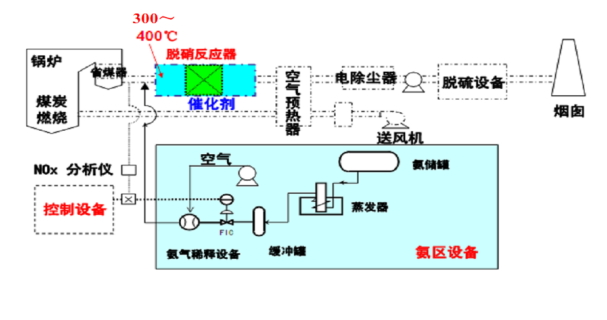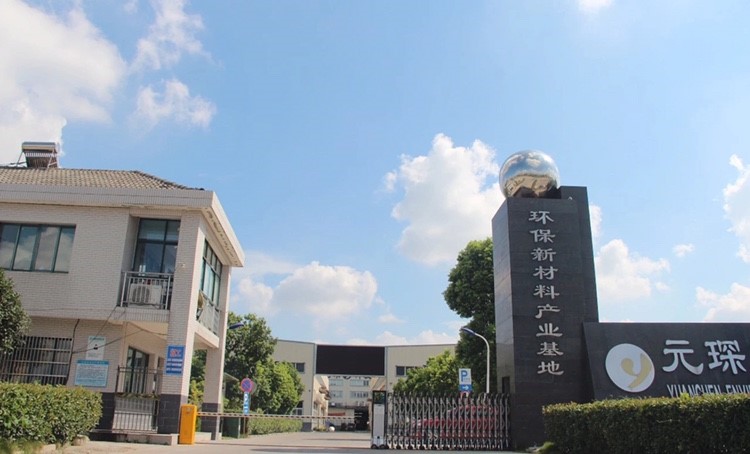
Denitrification is an important part of the flue gas treatment process, and currently there are two major mature and commonly used denitrification processes, SCR and SNCR. This paper mainly introduces the composition of SCR denitrification system and the factors affecting denitrification efficiency.
SCR denitrification system composition
SCR denitrification system generally consists of ammonia storage system, ammonia and air mixing system, ammonia injection system, reactor system, detection and control system, etc.

Factors affecting denitrification efficiency
1) Flue gas temperature
When operating at low temperatures, ammonium, sulfuric acid, water and other condensates in the flue gas are below their respective dew point temperatures and the catalyst will draw them into the pores. When the temperature rises, the evaporation of these substances will cause the pressure in the catalyst pores to increase and the resulting mechanical stress may cause damage to the catalyst. Low temperatures can also lead to the generation of ammonium sulfate increasing the chance of clogging. High temperature will result in sintering of the catalyst, leading to a decrease in specific surface, lower activity and even deactivation.
2) NH3/NO2
The increase of ammonia escape rate reduces the denitrification rate and also increases the concentration of unconverted NH3 in the purified flue gas, which causes secondary pollution. Generally, in the design process, the value of NH3/NO is controlled within the range of 0.8~1.2, and it will be changed according to the change of unit load.
3) Inlet NO2 concentration
With a certain volume of catalyst, the load in the catalyst orifice is gradually increasing as the inlet NO2 concentration rises, which leads to a decrease in the denitrification efficiency of the catalyst.
4) Air velocity
Air velocity = standard flue gas volume/catalyst volume is a constant value for a certain catalyst volume, and the air velocity is generally 3000-5000h-1

5) Residence time
Residence time is the reaction time of nitrogen oxides on the active site of the catalyst with the active substance. If the time is too short, the NOx removal is not strong enough and the denitrification efficiency decreases; if the time is too long, it will prevent other NOx from combining with the active site and reacting, and the denitrification efficiency decreases.
6) The degree of uniform mixing of flue gas
The key to SCR engineering design is to achieve the best turbulent mixing of NH3 and NOx. Therefore, the denitrification reactants must be atomized and mixed with the flue gas as much as possible to ensure sufficient contact with the reactants being removed. Mixing is accomplished by the injection system by pressurizing gaseous ammonia into the flue gas. The injection system controls the injection volume, injection angle, velocity and direction of the injected reactants. The general system uses steam or air as the carrier gas to increase the penetration of the flue gas. The flue gas and ammonia are mixed prior to entering the SCR reactor.

Anhui Yuanchen Environmental Protection S&T Co., Ltd (hereinafter referred to as "Yuanchen Technology") is a high-tech enterprise integrating R&D, production and sales of dust removal filter bags and denitrification catalysts. Over the past sixteen years, Yuanchen Technology has been focusing on the environmental protection field, and now has 4 international PCT, 33 authorized invention patents and 77 invention patents in process, among which many products such as "dust removal and denitrification integrated technology products" have been awarded the Scientific Progress Award of Anhui Province. Our dust filter bags and SCR denitrification catalysts have been widely used in cement, steel, glass kilns, waste incineration, biomass power generation, non-ferrous metal smelting and other industries.